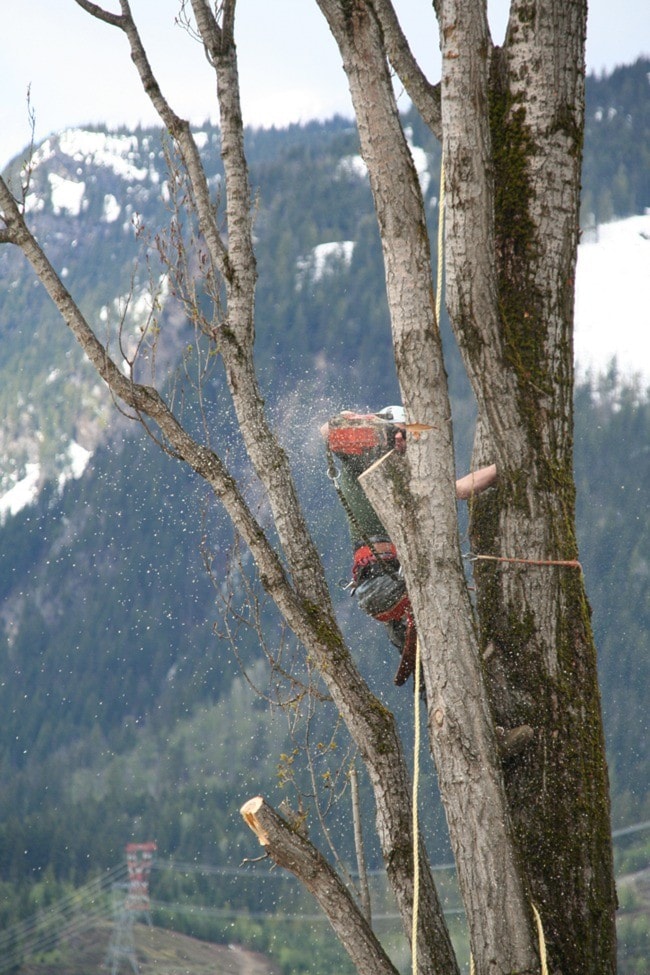Work began May 12 to remove 14 dangerous poplar trees from Centennial Park.
There are about 30 columnar poplars in the park. The majority run along the edge of the Columbia River, serving primarily as a windbreak. Another row runs next to the new washroom building.
Acting Parks and Arena foreman Dave Manson explained the trees being falled are old, diseased and dangerous. He said many of them have root rot or other health issues, such as galls caused by a variety of infestations.
A windstorm during the Glacier Challenge ball tournament in 2009 highlighted the need to deal with the trees. Winds whipped up, snapping branches off and raining them down on the tents below. One tent in particular took a direct hit from a falling tree. Fortunately, nobody was inside at the time.
It wasn't the only incident; branches frequently fly off the trees during windstorms. A walking and cycling path is located beneath the row along the Columbia, causing safety concerns.
The work is expected to take around two weeks, with an average of one tree being cut down and removed each day.
On May 12, city arbourist Matt McCaw was cutting the first tree right next to the snow dump at the edge of the Columbia. One of the main trunks of the tree shattered and fell over last year during a windstorm. McCaw explained that a Flicker had burrowed into the tree to nest, weakening it at the point where it snapped off in the storm.
McCaw climbed the tree then worked from the top down, taking off branches and then trimming the trunk in sections.
There are plans to replace the poplars with a variety of new trees. A couple of replacement trees have already been planted or transferred in recent years.
Planting a variety of trees means they won't all have to come down at once in the future. Plans call for slower-growing trees that last longer and species that require less maintenance -- meaning cost savings for the city.
The exact age of the poplars is unknown. Amongst the existing 30 trees, the majority are thought to be about 80 years old, while some of them are distinctly smaller and much younger.
Manson called the Times Review in an effort to inform the public about what was happening.
In June, 2010, Revelstoke city council went through a public notification process when they removed 13 maple trees from downtown Revelstoke that were damaging sidewalks. When asked why there wasn't as similar notification process for these trees, Manson explained it is because the poplars are being removed because they are a hazard.
